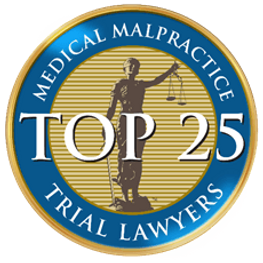Despite its frequent mention, whiplash remains shrouded in myths and misconceptions. These misunderstandings can lead to inadequate treatment, delayed recovery, and unnecessary suffering. In order to navigate the complexities of whiplash effectively, it is crucial to separate fact from fiction.
Myth: Whiplash Is Always Immediate and Obvious
One of the most pervasive myths about whiplash is that its symptoms are immediate and easily identifiable. Many believe that if they do not feel pain or discomfort immediately following an accident, they are not injured. However, the reality is that whiplash symptoms can be delayed, sometimes taking hours, days, or even weeks to manifest. This delay can be attributed to the body’s initial shock response, which can mask pain and other symptoms.
Additionally, the adrenaline rush experienced during a traumatic event can temporarily alleviate discomfort, leading individuals to believe they are unscathed. Recognizing the potential for delayed symptoms is essential for timely and effective treatment.
Myth: Whiplash Only Occurs in High-Speed Collisions
While it is true that severe accidents can cause significant injuries, whiplash can also occur in low-speed collisions, even those occurring at speeds as low as five to ten miles per hour. The sudden jolt and rapid movement of the head and neck in any type of collision can cause the soft tissues in the neck to stretch and tear, leading to whiplash. It is important not to underestimate the potential for injury in minor accidents and to seek medical attention regardless of the perceived severity of the collision.
Myth: Whiplash Is Not a Serious Injury
The misconception that whiplash is a minor or trivial injury can have serious consequences. While some cases of whiplash may resolve with minimal intervention, others can lead to chronic pain, reduced mobility, and long-term complications if not properly addressed. The impact of whiplash can extend beyond the neck, affecting the shoulders, back, and even causing headaches and dizziness. Dismissing whiplash as insignificant can lead to inadequate treatment and prolonged suffering. It is crucial to acknowledge the potential severity of whiplash and to seek appropriate medical care to ensure a full recovery.
Founded in 1975, Christian & Christian has deep roots in the community. 
Only Serving People, Never Companies
Myth: Whiplash Is Easily Faked
There is a pervasive belief that whiplash is often exaggerated or faked for financial gain, particularly in the context of insurance claims. This myth can lead to skepticism and distrust towards individuals reporting whiplash symptoms. However, whiplash is a legitimate medical condition that can be objectively diagnosed through a combination of patient history, physical examination, and imaging studies such as X-rays or MRI scans. Medical professionals are trained to identify genuine cases of whiplash and to differentiate them from fraudulent claims. Dismissing whiplash claims as fraudulent can result in the denial of necessary treatment and support for those genuinely suffering.
Myth: Wearing a Neck Brace Is the Best Treatment for Whiplash
The image of someone with whiplash wearing a neck brace is a common one, leading to the belief that neck braces are the best treatment for this condition. However, current medical guidelines suggest that prolonged use of a neck brace can actually hinder recovery by causing stiffness and weakening the muscles. Instead, early movement and gentle exercise are often recommended to promote healing and maintain mobility.
Physical therapy, pain management techniques, and a gradual return to normal activities are key components of an effective whiplash treatment plan. It is important to follow medical advice tailored to individual needs rather than relying on outdated or generalized notions of treatment.
Myth: Whiplash Always Heals Quickly and Completely
While many cases of whiplash do resolve within a few weeks to months, some individuals may experience persistent symptoms that can last for years. Chronic whiplash can result in ongoing pain, reduced range of motion, and a significant impact on daily activities and quality of life. The variability in recovery times and outcomes underscores the importance of individualized treatment plans and ongoing medical support. Recognizing that whiplash can have long-term consequences encourages a proactive approach to treatment and rehabilitation, helping to mitigate the risk of chronic pain and disability.
Myth: Only Car Accidents Cause Whiplash
Although car accidents are a common cause of whiplash, they are not the only scenario in which this injury can occur. Any situation that involves a sudden and forceful movement of the head and neck can potentially cause whiplash. This includes sports injuries, falls, physical assaults, and even amusement park rides. Understanding the various potential causes of whiplash helps to raise awareness and ensures that individuals seek appropriate medical evaluation and treatment regardless of the context in which the injury occurred.
Myth: Whiplash Is Primarily a Physical Injury
Whiplash is often viewed solely as a physical injury, affecting the muscles, ligaments, and bones of the neck. However, the impact of whiplash can extend to psychological and emotional health as well. Individuals who suffer from whiplash may experience anxiety, depression, and post-traumatic stress disorder (PTSD), particularly if the injury resulted from a traumatic event such as a car accident. A comprehensive approach to whiplash treatment should address both the physical and emotional aspects of the injury, ensuring holistic care and support for recovery.
Value of a Personal Injury Case Choosing a Personal Injury AttorneyRelated Videos
Myth: Whiplash Can Be Self-Diagnosed and Self-Treated
The belief that whiplash can be easily self-diagnosed and managed without medical intervention is a dangerous misconception. Whiplash symptoms can overlap with those of other serious conditions, such as fractures or herniated discs, making professional evaluation essential. Self-treatment methods, such as over-the-counter pain medications and rest, may provide temporary relief but do not address the underlying injury. A thorough medical assessment and tailored treatment plan are crucial for effective recovery and the prevention of complications.
Myth: Whiplash Only Affects the Elderly or Those with Pre-existing Conditions
While age and pre-existing conditions can influence the severity and recovery from whiplash, this injury can affect individuals of all ages and health backgrounds. The mechanics of a sudden impact can cause whiplash in anyone, regardless of their physical condition. It is important not to dismiss the potential for whiplash based on age or health status and to seek medical evaluation if symptoms arise following an incident.
Myth: Insurance Will Automatically Cover All Whiplash-Related Expenses
Many people assume that their insurance will automatically cover all expenses related to whiplash, including medical bills, rehabilitation costs, and lost wages. However, navigating insurance claims can be complex and challenging. Insurance companies may dispute the extent of the injury or the necessity of certain treatments, leading to denied claims or inadequate compensation. Seeking legal assistance can be invaluable in ensuring that individuals receive the full benefits to which they are entitled. Understanding the potential hurdles in the insurance process highlights the importance of legal support in whiplash cases.
Verdicts & Settlements
Advocating for Whiplash Victims
If you or a loved one has experienced whiplash, it is essential to seek comprehensive medical evaluation and appropriate treatment to ensure a full and timely recovery. At Christian & Christian Law, we understand the complexities of whiplash injuries and the challenges individuals face in securing fair compensation and effective treatment. Our dedicated team is committed to advocating for your rights and providing the support you need during your recovery journey. Contact Christian & Christian Law today for a consultation and let us help you navigate the path to healing and justice.











